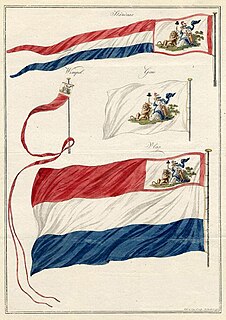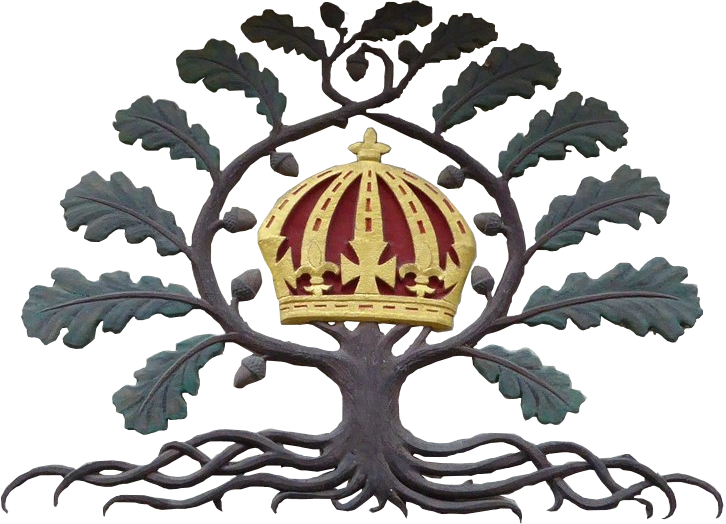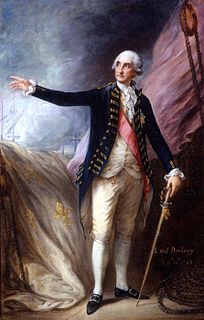
HMS Zebra was a 16-gun Zebra-class ship sloop of the Royal Navy, launched on 31 August 1780 at Gravesend. She was the second ship to bear the name. After twenty years of service, including involvement in the West Indies campaigns during the French Revolutionary Wars, she was converted into a bomb vessel in 1798. In this capacity she took part in attacks on French ports, and was present at both battles of Copenhagen. The Navy sold her in 1812.

In the Vlieter incident on 30 August 1799, a squadron of the Batavian Navy, commanded by Rear-Admiral Samuel Story, surrendered to the British navy. The incident occurred during the Anglo-Russian invasion of Holland. It took place in the tidal trench between Texel and the mainland that was known as De Vlieter, near Wieringen.

Samuel Story was a vice-admiral of the navy of the Batavian Republic. He commanded the squadron that surrendered without a fight to the Royal Navy at the Vlieter Incident in 1799.

Vice-admiral Jonkheer Theodorus Frederik van Capellen, GCMWO, KCB was a Dutch naval officer. He was married to Petronella de Lange (1779–1835). Alexandrine Tinné, female explorer and pioneering photographer, was his granddaughter.

Sir Andrew Mitchell, KB was an admiral of the blue in the Royal Navy. He married Mary Uniacke in Halifax, Nova Scotia on 3 May 1805.

The Battle of Callantsoog followed the amphibious landing by a British invasion force under Lieutenant-General Sir Ralph Abercromby near Callantsoog in the course of the Anglo-Russian invasion of Holland of 1799. Despite strong opposition by troops of the Batavian Republic under Lieutenant-General Herman Willem Daendels the British troops established a bridgehead and the Dutch were forced to retreat.
HMS Cynthia was a ship sloop of unusual design, launched in 1796. She took part in one medal-worthy boat action and participated in captures of a number of merchant vessels, was present at two notable occasions, the surrender of the Dutch fleet in the Vlieter Incident and the capture of Alexandria, and her crew participated in two land attacks on forts. She was broken up in 1809.
HMS Proselyte was a 32-gun Royal Navy fifth-rate frigate. She was the former Dutch 36-gun frigate Jason, built in 1770 at Rotterdam, the Netherlands. Her crew mutinied and turned her over to the British in 1796. She then served the Royal Navy until she wrecked in 1801.

The Batavian navy was the navy of the Batavian Republic. A continuation of the Staatse vloot of the Dutch Republic, though thoroughly reorganized after the Batavian Revolution of 1795, the navy embarked on several naval construction programs which, at least on paper, made her a serious rival of the Royal Navy during War of the Second Coalition. However, the Capitulation of Saldanha Bay, the Battle of Camperdown and the Vlieter Incident showed that she did not measure up to that expectation. Nevertheless, the organisational reorganizations proved durable, when the Batavian Republic was succeeded by the Kingdom of Holland, and later, the Kingdom of the Netherlands, so that the present-day Royal Netherlands Navy should trace its ancestry through her.
HMS Circe was a 28-gun Enterprise-class sixth-rate frigate of the Royal Navy. She was launched in 1785 but not completed or commissioned until 1790. She then served in the English Channel on the blockade of French ports before she was wrecked in 1803.

The Action of 22 August 1795 was a minor naval engagement during the French Revolutionary Wars between a squadron of four British Royal Navy frigates and two frigates and a cutter from the Batavian Navy. The engagement was fought off the Norwegian coastal island of Eigerøya, then in Danish Norway, the opposing forces engaged in protecting their respective countries' trade routes to the Baltic Sea. War between Britain and the Batavian Republic began, undeclared, in the spring of 1795 after the Admiralty ordered British warships to intercept Batavian shipping following the conquest of the Dutch Republic by the French Republic in January 1795.

The Invasion of Ceylon was a military campaign fought as a series of amphibious operations between the summer of 1795 and spring of 1796 between the garrison of the Batavian colonies on the Indian Ocean island of Ceylon and a British invasion force sent from British India. The Dutch Republic had been a British ally during the French Revolutionary Wars, but was overrun by the French Republic in the winter of 1794 and reformed into the client state of the Batavian Republic. The British government, working with the exiled Stadtholder William of Orange, ordered the seizure of Batavian assets including colonies of the former Dutch Empire. Among the first territories to be attacked were those on the coast of the island of Ceylon, with operations initially focused on the trading port at Trincomalee.
The Action of 12 May 1796 was a minor naval engagement during the French Revolutionary Wars between a squadron of British Royal Navy frigates and a frigate and four smaller ships of the Batavian Navy. The British squadron had been detached on the previous day from the British North Sea fleet under Admiral Adam Duncan, which was cruising off the Batavian fleet anchorage at the Texel, while the Batavian squadron was returning to the Netherlands from the Norwegian coast where it had been sheltering since suffering defeat at the Action of 22 August 1795 the previous year. As the Batavian squadron neared the Batavian coast, the British squadron under Captain Lawrence Halstead attacked.

The Capture of the Dutch fleet at Den Helder on the night of 23 January 1795 presents a rare occurrence of a "naval" battle between warships and cavalry, in which a French Revolutionary Hussar regiment surprised a Dutch Republican fleet frozen at anchor between the 3 kilometres (1.9 mi) stretch of sea that separates the mainland port of Den Helder and the island of Texel. After a charge across the frozen Zuiderzee, the French cavalry captured 14 Dutch ships and 850 guns. A capture of ships by horsemen is an extremely rare feat in military history.
The Dutch sloop Sireene was launched in 1786. The British captured her in 1796 at the capitulation of Saldanha Bay. She then served in the Royal Navy, first briefly as the sixth rate HMS Daphne, and then from 1798 as the prison ship HMS Laurel. The Admiralty sold her in 1821.

La Réunion was a 36-gun French warship launched in 1786. During the French Revolutionary War she was stationed at Cherbourg and was successfully employed harassing British merchant shipping in the English Channel until the British captured her off the Cotentin Peninsula during the action of 20 October 1793. Renamed HMS Reunion, she served for three years in the Royal Navy helping to counter the threat from the new Batavian Navy, before she was wrecked in the Thames Estuary in December 1796.

HMS Crescent was a 36-gun Flora-Class frigate of the British Royal Navy. Launched in 1784, she spent the first years of her service on blockade duty in the English Channel where she single-handedly captured the French frigate, La Reunion. In 1795, Crescent was part of a squadron commanded by George Elphinstone, that forced the surrender of a Batavian Navy squadron at the capitulation of Saldanha Bay. After serving in the West Indies, Crescent returned to home waters and was wrecked off the coast of Jutland on 6 December 1808.

The East Indies theatre of the French Revolutionary Wars was a series of campaigns related to the major European conflict known as the French Revolutionary Wars, fought between 1793 and 1801 between the new French Republic and its allies and a shifting alliance of rival powers. Although the Indian Ocean was separated by vast distance from the principal theatre of the conflict in Western Europe, it played a significant role due to the economic importance of the region to Great Britain, France's most constant opponent, of its colonies in India and the Far Eastern trade.

The Capitulation of Saldanha Bay was the surrender in 1796 to the British Royal Navy of a Dutch expeditionary force sent to recapture the Dutch Cape Colony. In 1794, early in the French Revolutionary Wars, the army of the French Republic overran the Dutch Republic which then became a French client state, the Batavian Republic. Great Britain was concerned by the threat the Dutch Cape Colony in Southern Africa posed to its trade routes to British India. It therefore sent an expeditionary force that landed at Simon's Town in June 1795 and forced the surrender of the colony in a short campaign. The British commander, Vice-Admiral Sir George Elphinstone, then reinforced the garrison and stationed a naval squadron at the Cape to protect the British conquest.
HMS Rosario, previously the Spanish ship Nuestra Senora Del Rosario, was a brig the British Royal Navy captured off Cadiz in 1797 and took her into service. The British converted her to a fireship and expended her in 1800 in an attack at Dunkirk Roads.





















